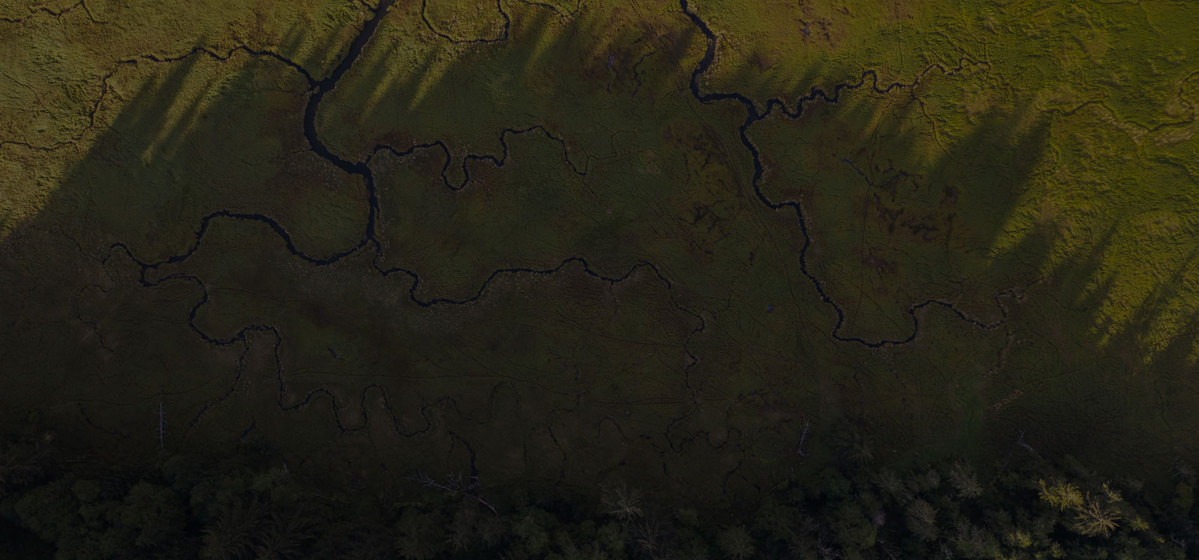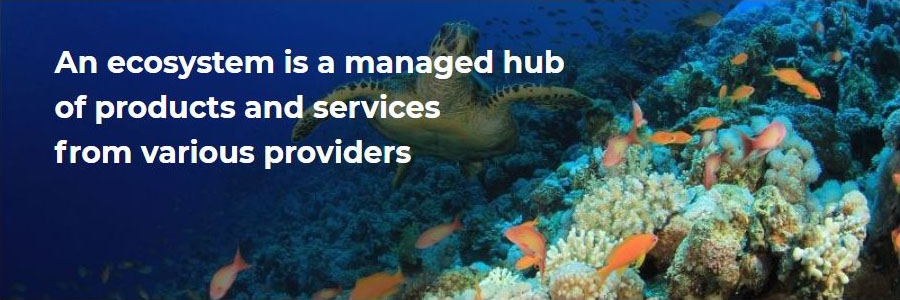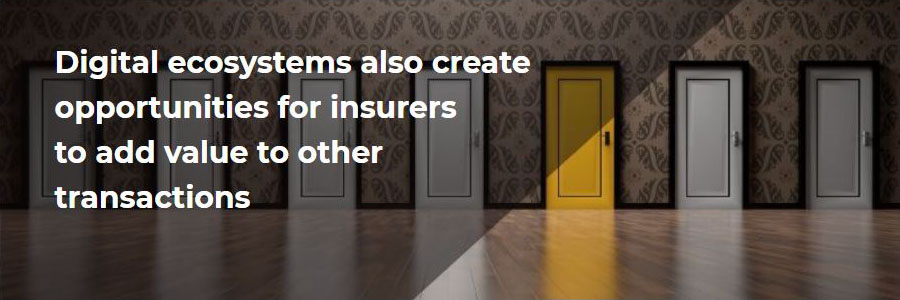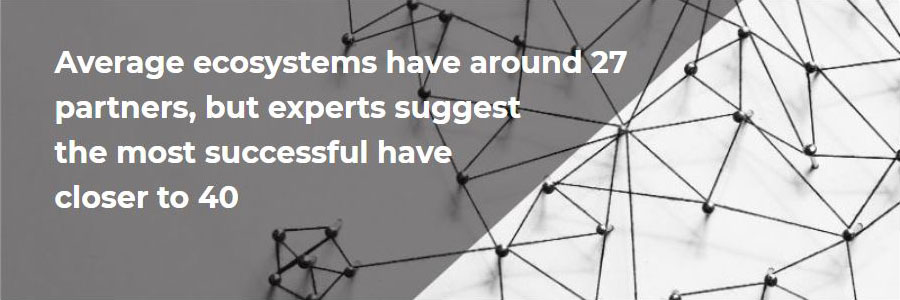What to know about building your first digital ecosystem

Digital ecosystems offer new opportunities for insurers to evolve and grow revenue. Here’s what you need to know to get started.
Traditionally, insurers have taken a passive role in customers’ lives, relevant only in times of crisis. Because customers aren’t thinking about them, they run the risk of becoming invisible, and customer retention rates suffer as a result.
Now, they have the option of joining networks of providers that customers use every day. A new world of digital ecosystems are bringing together connected services, centralising the customer’s experience and creating new opportunities for insurers to connect with their customers.
McKinsey predicts that new ecosystems will continue to emerge in place of traditional industries, bringing together existing services under new, integrated umbrellas. Life insurance, for example, is shifting towards becoming an integrated wellbeing behemoth.
What is an ecosystem?

An ecosystem is a network of products and services from various providers, all brought together in one centralised hub. They’re designed to give customers better value, by combining services with strong synergy and offering them all in one place.
A digital ecosystem uses interconnected tech to create the network. That might include:
- A central platform like Google Nest or Liberty Mutual
- Agile software development tools and task managers
- Cloud file management and distribution
- Collaboration and sharing tools
- Email marketing and CRM software
- Public-facing tools like websites, apps and other platforms
- Smart connected devices like appliances, cars, homes and so on
Because these are digital, the ecosystem is borderless; it can span tech types, industries and geographies.
Why are digital ecosystems a good opportunity for life insurers?
Customers often think about insurance only when they need it, which makes connecting with a customer at other times – and building a relationship with them – difficult. Joining a digital ecosystem means an insurer can be visible and useful the rest of the time, becoming a supportive part of the customer’s life, while also providing opportunities to proactively reduce claims.
These kinds of ecosystems create the opportunity to adapt to a customer’s needs. The network of services can share data to better understand customer behaviour, including the way they use products, how their choices have changed and the combination of factors that drives their decisions. An insurer with access to this rich seam of information can tailor marketing, special offers, and products far more accurately than one working in isolation.
This interconnected information can speed up claims, too. Imagine: a two-car accident occurs and no one will accept liability. Unlike a manual claim, data from a connected vehicle can take the ambiguity out of what happened. Instead of ringing around to every agent and provider, the insurer has access to accurate, relevant information – and all in one place.

Digital ecosystems also create opportunities for insurers to add value to other transactions. For example, a used car website might integrate an insurance policy option into their checkout process. Insurance options might be bundled into a self-guided app for moving out of home. Even an online baby registry might give new parents the option to upgrade their health insurance.
How can life insurers get started with digital ecosystems?
There are two roles an insurer can take in the ecosystem: a participant (one provider within the network) or an orchestrator (the company taking the lead). Companies have the option of joining an existing network, or bringing multiple services together to provide customers with one hub.
| Participant | Operator |
|---|---|
| Fewer barriers to entry | Ability to control participants |
| Lower ongoing cost | Create the ideal ecosystem environment |
| Offer value to other network participants | Greater revenue opportunities |
| Little internal resource management | Requires advanced digital resources |
| Smaller profit margins | Flexibility to adapt to new technology |
| Less control over the whole ecosystem | Higher ongoing cost |
Insurers need to decide the best option for their strategic objectives.
Consider:
- What’s in it for your customers?
- Can you leverage other services to create better value for the customer?
- Will joining a digital ecosystem create new opportunities for your company?
- Can you generate additional revenue as an ecosystem participant?
- Do you need to connect to physical end-points like devices and buildings?
- What internal IT resources do you have available to manage an ecosystem?
Once you know why you’re doing it, you can start to look at how.
- Identify internal and external resources
- Create an inventory of the connected tools
- Draw connections between these tools – look for duplicates and inefficiencies
- Collaborate with other service providers
- Draw on their expertise, and offer yours in return

Average ecosystems typically have around 27 partners, but experts suggest the most successful have closer to 40. Link in with providers to build a broad global network with an engaged user base and stay across evolving technology.
How will ecosystems take insurers into the future?
As an ecosystem grows, the insurer becomes like a concierge. For example, customers can find everything they need in one place, from policy information to doctors’ appointments and exercise regimes. The ecosystem might integrate with their fitness wearables, air quality monitors or sleep app to offer personalised products and advice.
Working this way allows insurers to make the shift from a passive service that people hope they won’t need, to a preventative and positive way for customers to live better. New revenue streams will emerge. Reactive claims will be prevented from happening in the first place. Information available to insurers will be more accurate, more immediate and easier to understand, and that makes a better experience for everyone.
